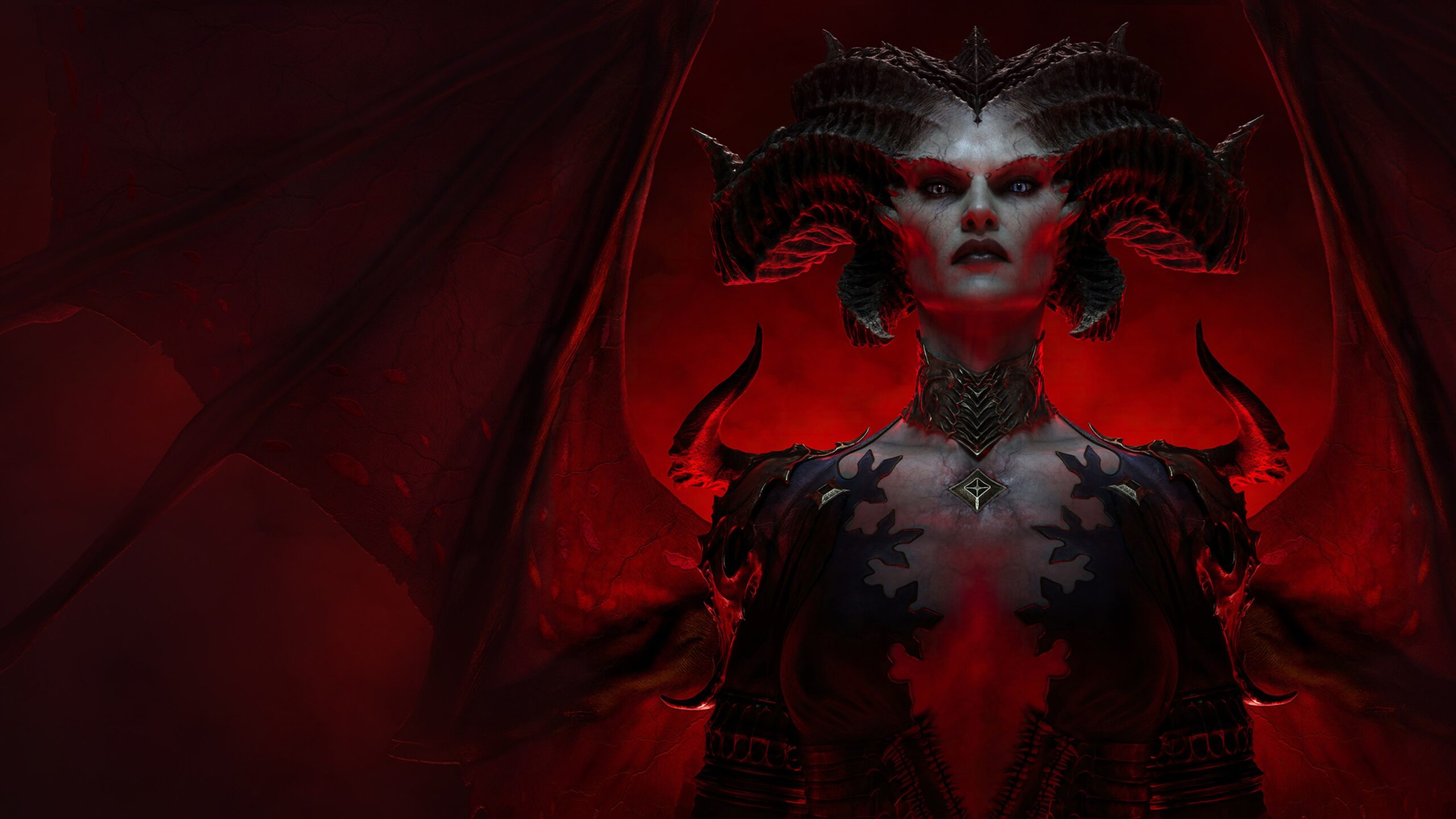
Diablo 4 – Gaming Review
In a game where you can pull a legendary two-handed axe out of a wolf, Diablo 4 tries to ground us in a dark fantasy world, but that’s impossible. Diablo 4 has a subtle storytelling style similar to that of Marvel films, and it’s about five times as long, and no matter what its dour characters tell you, you’re a superhero born with a blank inventory and a burning desire to fill it.
The title of Blizzard’s latest action RPG hides what’s really happening: Diablo 4 is a reboot. A reboot that is unnecessary, but one with a clear goal: to repurpose the strengths of the series into a live service format that fits in with the lives of players who have a few other games to play. Once you finish its campaign, its glorious depth reveals itself, but the overwhelming grind restrains the creativity in its intricate RPG systems.
The structure of today’s live services, exemplified by Destiny 2, appears to be well-suited for Diablo’s traditional co-op design. However, it involves a significant alteration in the way the game is built. The story-driven adventure of Diablo 4 starts off promisingly, but it isn’t until you’ve finished the campaign that its best parts begin to emerge. Features such as Grim Favors quests and Helltide events, which have an almost roguelike quality to them, are only accessible after completing a ten-hour storyline that attempts to reset the tone from Diablo 3 with an overabundance of darkness without affecting what makes a Diablo game unique (i.e., killing demons).
Blizzard’s response to criticisms that Diablo 3 wasn’t sufficiently grim resulted in something unbearably dismal. The main narrative follows the developing menace of Lilith, the “Mother of Sanctuary”, while the side adventures introduce a variety of failures. To meet someone without them doing something bad – betraying their own kids, making a deal with demons, or murdering someone else over an insignificant argument – is almost unheard of. After so many cases of discovering dead relatives or having to put them down myself, I became numb to any requests that NPCs made and there was scant joy or hope to be found in those I believed I was fighting for.
Diablo 4’s promise of a thematic return to darkness or Diablo 2 truly works when it meaningfully impacts gameplay. On my quest for Lilith, I entered an abandoned monastery expecting demons and corpses, yet what I discovered was something much more frightening: hallways devoid of life but filled with echoing footsteps, plus in the far background, doors slamming shut and agonizing cries. Not just another dungeon where I needed to battle faceless enemies to find my target, I instead felt as if I was following a murderer who stayed just out of sight. It created one of Diablo 4’s most chilling gaming sequences.
The game’s endgame content offers truly unique experiences, such as the Helltide events. These events spread a deep red hue over parts of the map and empower enemies with increased strength. With only an hour to complete the task, combatants must race against time to kill hordes of demons and collect valuable items before they run out of time. Doing these events solo might be too risky for some, as you could lose half your rewards in case of death; however, joining a group can drastically reduce this threat. The excitement and danger brought by Helltides certainly make Diablo 4’s semi-MMO elements shine; even if the rewards are not greatly different from dungeon runs, this evoked sense of urgency turns every encounter into its own puzzle challenge rather than just another step to level up.
In the six-act campaign, players traverse Estuar to prevent Lilith from opening a portal to the underworld. Notable bosses, for instance one of Diablo’s iconic lesser evils in the midst of a sandstorm, are especially compelling due to their narrative purpose. Unfortunately, many of these fights are unfortunately banner by unimaginative MMO-like mechanics that require participants to evade designated areas on the ground until prevailing. It is not until after finishing the campaign that players face bosses that necessitate considerable knowledge about their chosen class in order to succeed.
Diablo 4’s campaign plods along at a snail’s pace, and it’s hard to comprehend what the antagonists want. Few moments of excitement occur, and they’re fleeting, as the plot regularly slides into a narrative you’ve seen time and again. The resolution has no bearing on the angels-vs-demons conflict, and I wouldn’t miss a thing if I chose to ignore the epilogue – something I intend to do with each new character I make.
After completing Diablo 4’s campaign, I was able to delve into its open world and take on the loot-hunting activities. As I advanced through the dungeons, the difficulty increased and my sharp skill set for creating character builds was put to the test. Years of experience playing Blizzard games has undoubtedly made me a better gamer – it all began with World of Warcraft, and then evolved into Overwatch 2. It is undeniable that this developer knows how to capture a genre’s essence and truly bring it alive.
It is Diablo 4’s skill tree that keeps me from thinking too hard about the treadmill underneath me.
Playing Diablo 4 activates my neurons in a way that’s almost embarrassing to admit, as the fundamental experience of clicking on demons to watch items pop out provides 30 seconds of fun. It’s clever design that ensures the last enemy you kill in a group of them drops the loot, making me feel like a rat in a box – yet, I still enjoy it in solo and co-op. Your first playthrough might feel too easy though, until World Tier difficulty options appear.
Diablo 4’s skill tree is the perfect distraction from my monotonous treadmill. Since Elden Ring, my YouTube recommendations have been packed with instructions on using exclusive builds and OP things before they’re gone. I’m pleased to say that all five classes—Barbarian, Rogue, Sorceress, Druid, and Necromancer—each offer a distinct experience within the hack-and-slash scope. Plus, Diablo 2 brought back the skill tree system that allows for some unique builds. No two players seem to agree on which build is best – exactly what was intended in a game like Diablo 4!
In addition, Legendary aspects can be earned from dungeons or even pulled from items to enhance your skills, so you can create your own Legendary gear. During the early stages, I found a chestpiece that enabled me to use Bone Storm as a barrier too. With a cyclone of bones, I was able to walk right into any group of enemies and survive. Once you reach level 30, you can rely on rare and legendary items as permanent aspects of your class.
The moment you find yourself in the Fractured Peaks, taking down that first pack of wolves is a milestone. Leveling up and earning your first skill point brings about an exhilarating sense of opportunity, which will keep repeating itself until you reach the cap of level 100. Skill and Paragon points serve as reward for all your hard work, ensuring that you remain hooked long after becoming acquainted with everything your character class has to offer. The satisfaction one gets from thoroughly planning out their build and expertly investing in said points is unparalleled.
My journey through the necromantic arts began with me leading an army of skeletons. I stood in place, commanding them to fire piercing bone spears while my skeletal comrades crushed enemies. That method worked well enough for a while, but my curiosity got the better of me and I invested some gold into improving things. This switch saw me forsake the undead horde in favour of gaining godlike powers by sacrificing demons and granting myself more critical strike rating. Now I’m an engine fueled by the corpses of my vanquished foes: tendrils sprout out of their bodies, pulling the demons right into my ongoing barrage of bone spears which on contact inflict so much damage that with a few casts everything is destroyed.
Is there anything more magical than being able to blend your spell effects as a Sorceress?
Once you’ve thought of how to best play your class, you’ll find the skill tree has an option for you. If Bone Spear is your thing, there are many alternatives that can bolster its initial power or increase the damage it does. Moreover, Legendary aspects gained from dungeons or items provide further suffusion with special effects – my ring causes the destructive force of Bone Spear to double against Vulnerable opponents. Besides that, Plagued Corpse Tendrils skill brings in enemies and renders them Vulnerable for three seconds, which means a Bone Spear or two should be more than enough.
The sheer number of creative possibilities within the skill trees I’ve toyed with has me eager to check out what the other classes have tucked away in theirs. For instance, Sorceress’ can equip spells as a passive ability. At first glance, you may assume this essentially lets you enhance the school of magic you’re focusing on, such as having a 5% chance to cast a free Ice Armor for your ice build – but it’s not quite that simple. In fact, if you only invest one point in Fire Bolt and use it in a passive Enchantment Slot, it’ll have any of your abilities inflict burning damage on their targets. With one measly skill point, your entire spellbook now benefits from Pyromancy skills, granting access to an array of potential builds. And what is more befitting for a Sorceress than having such an affinity for magic that they’re able to combine their spell effects?
As you progress through Diablo 4, you realize how hard it is to try different playstyles. This is due to the removal of Diablo 3’s convenient rune system, and the shift back to the Diablo 2-style skill tree. Moreover, gear plays a vital role in your build as certain legendary items provide aspects that alter how your skills work; these can be imprinted onto rare items, but at a hefty cost. Spending a considerable amount of time farming for gold or materials is needed if you want to frequently experiment with different aspects and builds.
Currently, it will take around 100,000 gold to reset my skills – and more beyond that in terms of rare materials from salvaging Legendary items to change the aspects of my gear. It’s not totally unmanageable, but the expense almost feels like a deterrent to discourage me from shifting builds without trying out all the new grinds for resources. All I ask is for Diablo 4 to ease off on the live service stipulations so we can make the most of our demon-clicking experiences.
A game about turning the legions of Hell into loot crops is so close to channeling the progression-hungry energy I need.
By placing a financial burden on character changes, Diablo 4 takes longer to ascend. Rather than freely exploring all the builds in the game, I find myself sticking with a single set of stats or gear over extended periods of time. My desire to experience other classes and items vanishes when I’m stuck in a loop of farming the same events for incremental upgrades. The costly nature of respeccing can add some depth to the game, but it also limits what players want to try.
Diablo 4’s seasons and battle pass offer a chance to invigorate the action RPG loop with unique challenges, events, and story quests. Much like Diablo 3, these periods of time could reinvigorate dungeons and events that you’ve already experienced but will be presented in an entirely fresh way, encouraging players to try out different classes and builds. I simply hope that the game takes full advantage of its potential for unpredictability; when players reach a certain level of power or comfort with their character, this excitement can begin to diminish. Underneath all the messiness of the campaign and heavy atmosphere lies a captivating Diablo game; its mutable skill system, gear-defining loot drops, and pulse-raising open world events remain undeniably appealing.
Diablo 4’s live service structure has proven to be an obstacle in achieving the same level of satisfaction one feels when they build their characters into a god-like state, as experienced by the previous games. However, this setup does offer Blizzard the chance to find and capitalize on the game’s good qualities through seasons or future patches. At the moment, most of these features have been confined due to scarcity of resources and rigid enemy level scaling that regulate them. But with a bit of work, Diablo 4 can get closer to being a playground for those looking to make something out of Hell’s legions; turning them into desirable loot crops. Therefore, I urge Blizzard to respect players who wish to repeat dungeons 10 times for gear from beginning till end. Furthermore, some space ought to be permitted for classes to express creativity without any hindrances in order for these great potentials not go wasted.
Diablo 4 is a great addition to the video game universe and is highly recommended.

